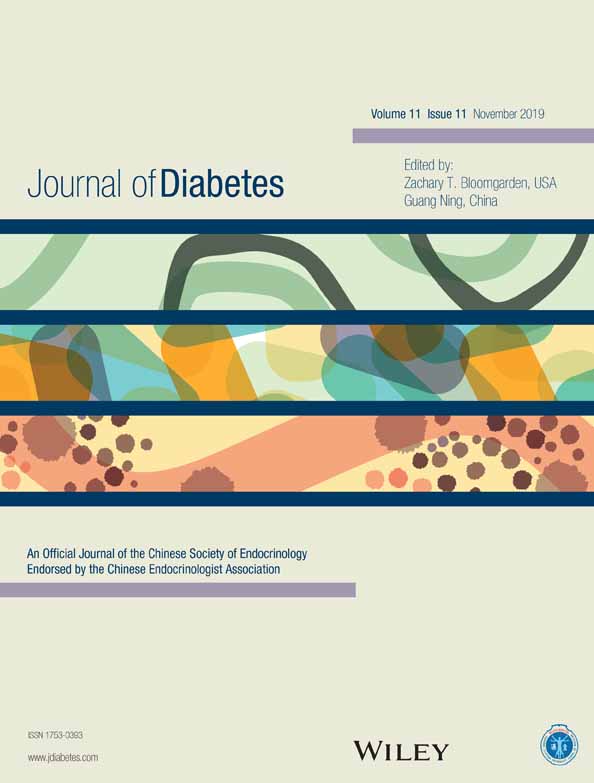Resting heart rate is associated with metabolic syndrome and predicted 10-year risk of cardiovascular disease: a cross-sectional study
静息心率与代谢综合征及10年心血管疾病的预测风险相关:一项横断面研究
Funding information: Ministry of Science and Technology of the People's Republic of China, Grant/Award Number: 2016YFC1305202; Shanghai Sailing Program, Grant/Award Number: 17YF1416800; the National Natural Science Foundation of China, Grant/Award Number: 81670795; Shanghai Committee of Science and Technology of China, Grant/Award Number: 15411966600; Shanghai Jiaotong University, Shuguang Program, Grant/Award Number: 15SG15; Gaofeng Clinical Medicine Grant Support (20152202) from Shanghai Municipal Education Commission.
Abstract
enBackground
This study examined whether resting heart rate (RHR) was associated with metabolic syndrome (MetS) and the 10-year predicted risk of cardiovascular disease in a Chinese population.
Methods
The associations of RHR with MetS and 10-year risk of atherosclerotic cardiovascular diseases (ASCVD) was examined in a cross-sectional study conducted in Shanghai, China (n = 9486).
Results
Compared with individuals in the lowest RHR quintile (≤71 b.p.m.), those in the highest quintile (≥91 b.p.m.) had a higher prevalence of MetS (21.2% vs 32.6%, respectively; P < 0.001). Logistic regression analyses showed that the multivariate-adjusted odds ratio (OR) and 95% confidence interval (CI) for MetS was 1.13 (1.08-1.18) for each 10-b.p.m. increment of RHR (P < 0.0001). Furthermore, RHR was strongly associated with the prevalence of hypertension, high blood glucose, and dyslipidemia, but not with central obesity. A stronger association of RHR with MetS was observed among individuals aged <65 years, male, with a body mass index <24 kg/m2, without diabetes, hypertension, abnormal lipids, and insulin resistance than among their counterparts (P < 0.05 for all). A significantly higher 10-year risk for ASCVD was observed with each 10-b.p.m. increment in RHR in both men and women (ORs [95% CIs] 1.20 [1.07-1.33] and 1.28 [1.17-1.39], respectively; Ptrend = 0.002 and < 0.0001, respectively).
Conclusions
In this study, RHR was associated with a higher prevalence of MetS and elevated 10-year predicted risk of ASCVD in both Chinese men and women. Whether RHR may serve as an indicator for MetS among relatively healthy individuals requires further investigation.
摘要
zh背景
本研究在中国人群中探讨了静息心率水平与代谢综合征以及10年心血管疾病的预测风险是否具有相关性。
方法
在中国上海开展的一项横断面研究(n=9486)中对静息心率水平与代谢综合征以及10年动脉粥样硬化性心血管疾病(atherosclerotic cardiovascular diseases,ASCVD)风险的相关性进行探讨。
结果
与最低分位静息心率水平(≤71 b.p.m.)相比,最高分位静息心率水平(≥91 b.p.m.)的人群代谢综合征的患病率更高(分别为21.2%和32.6%;P<0.001)。多元Logistic回归分析结果显示,静息心率水平每升高10 b.p.m.,校正后的比值比(odds ratio,OR)和95%可信区间(confidence interval,CI)为1.13(1.08-1.18,P<0.0001)。此外,静息心率与高血压、高血糖和血脂异常的患病率显著相关,但与向心性肥胖的患病率无关。在年龄<65岁、男性、BMI <24 kg/m2、无糖尿病、无高血压,无脂代谢异常和无胰岛素抵抗的个体中,静息心率与代谢综合征患病风险的相关性更为显著(各项指标P< 0.05)。静息心率水平每升高10 b.p.m.,男性和女性中的10年ASCVD风险均显著升高,其OR(95% CI)分别为1.20(1.07-1.33)和1.28(1.17-1.39)(Ptrend分别为0.002和< 0.0001)。
结论
本研究发现在中国男性和女性中,静息心率加快与代谢综合征患病率升高以及10年ASCVD预测风险增加显著相关。静息心率是否可以作为相对健康的个体其代谢综合征发生风险的预测指标需要进一步探讨。




